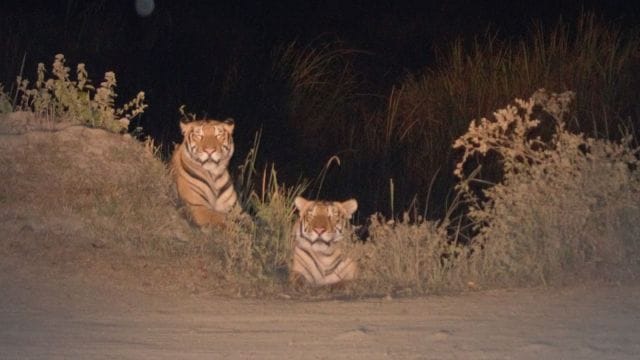ARTICLE AD BOX
 The report attributes the increased count of tigers to the Biswanath Wildlife Division being included in the sampling for the first time. (Photo/Kaziranga tiger reserve authorities)
The report attributes the increased count of tigers to the Biswanath Wildlife Division being included in the sampling for the first time. (Photo/Kaziranga tiger reserve authorities)
Kaziranga Tiger Reserve has the third-highest density of tigers in the world, the first large-scale assessment of the big cat’s population there has revealed. Officials say the reserve has an estimated 18.65 tigers per 100 square kilometres.
On Tuesday, officials released a summary report for 2024 titled ‘Status of Tigers in the Kaziranga Tiger Reserve’, with the findings of a Phase IV tiger monitoring initiative across Eastern Assam, Nagaon, and Biswanath Wildlife Divisions. This was done at the direction of the National Tiger Conservation Authority.
The survey documented 148 tigers in the reserve, up from 104 recorded in 2022, 99 in 2018 and 96 in 2014. Reserve director Sonali Ghosh said these findings show that Kaziranga has the third-highest density of tigers in the world, after Corbett Tiger Reserve in Uttarakhand and Bandipur Tiger Reserve in Karnataka.

The report attributes the increased count of tigers to the Biswanath Wildlife Division being included in the sampling for the first time. “This growth is particularly notable due to the first-time sampling of the Biswanath Wildlife Division, where 27 newly recorded tigers have contributed to the overall increase. In the core Eastern Assam Wildlife Division, the population grew from 104 in 2022 to 115 in 2024, while the Nagaon Wildlife Division maintained a stable count of six tigers,” it states.
The survey was conducted over 103 days using 293 paired camera traps across 1307.49 square kilometres, which yielded 4,011 tiger images in 242 locations. The report states that the right-flank stripes of the animals in these images were used to identify 148 adult tigers – 83 females, 55 males, and 10 with undetermined gender.

“The park’s diverse ecosystems, including Eastern wet alluvial grasslands, semi-evergreen forests, tropical moist mixed deciduous forests, and wetlands, provide an ideal habitat for tiger and megaherbivores. The conservation status of tigers in Kaziranga has been strengthened through rigorous protection measures, including anti-poaching efforts, habitat restoration, and community-based conservation initiatives,” states the report.
“Despite these successes, Kaziranga’s tiger population faces persistent challenges, including habitat fragmentation, human-wildlife conflict, and the pressures of agricultural expansion and infrastructure development around the tiger reserve. The impacts of climate change further complicate conservation efforts, necessitating adaptive management strategies to ensure long-term population viability,” it states.



.png)
.png)
.png)

























 English (US) ·
English (US) ·